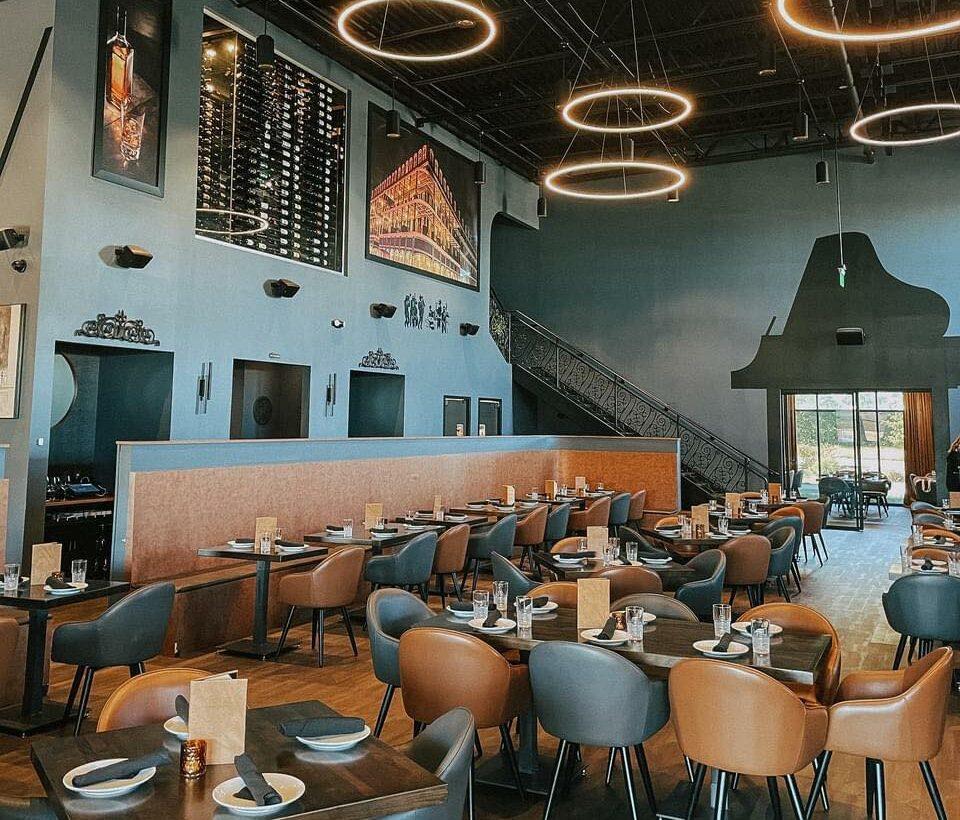Chinese Food Islamabad: Take Pleasure In Genuine Chinese Cuisine at its Best
Chinese Food Islamabad: Take Pleasure In Genuine Chinese Cuisine at its Best
Blog Article
Savor Authentic Eastern Cuisine With a Pan-Asian Spin for a Cooking Adventure
Getting started on a cooking journey with genuine Oriental cuisine, boosted with a Pan-Asian spin, provides an unique opportunity to explore the abundant tapestry of tastes that specify the area's diverse cooking practices. As you contemplate these luring recipes, take into consideration the social narratives and historic influences that shape them, each bite offering a tale waiting to be found. Instagrammable restaurants Islamabad.

Checking Out Pan-Asian Tastes
In the realm of international gastronomy, Pan-Asian food stands apart for its remarkable diversity and the harmonious interplay of flavors from different Asian societies. This cooking technique celebrates the abundant practices and special active ingredients discovered across the continent, developing a tapestry of tastes that is both intriguing and gratifying. Key to Pan-Asian cuisine is its ability to balance contrasting tastes-- pleasant, salted, spicy, and sour-- while highlighting the quality and top quality of each component.
From the umami-rich soy sauce of Japan to the intense chili peppers of Thailand, Pan-Asian food offers a substantial scheme of flavors. These elements are frequently incorporated in creative methods, enhancing recipes with layers of complexity. For circumstances, using aromatic herbs such as lemongrass and cilantro, usual in Vietnamese and Thai food, adds a rejuvenating illumination to recipes, while the consolidation of coconut milk provides a luscious, abundant texture.
The focus on fresh fruit and vegetables and fragrant seasonings makes sure that each meal is not just a banquet for the taste however likewise for the detects. Pan-Asian cuisine invites restaurants to embark on a culinary trip, exploring the vast and varied landscapes of Oriental gastronomy with every bite.
Blend Dishes to Try
While Pan-Asian food is celebrated for its traditional tastes, the contemporary culinary landscape is increasingly accepting blend dishes that mix these traditional elements with impacts from other regions. This cutting-edge technique not just honors the abundant heritage of Eastern culinary arts but also presents novel preference experiences that interest contemporary tastes buds.
An archetype of such a blend dish is the Korean-Mexican taco, where marinaded bulgogi beef is covered in a warm tortilla, topped with kimchi and a spicy gochujang-infused salsa. This combination weds the vibrant, mouthwatering tastes of Korea with the dynamic, fresh aspects of Mexican cuisine. Likewise, sushi burritos have acquired popularity, integrating the fragile creativity of Japanese sushi with the hearty, hand-held benefit of a burrito, commonly featuring fusion ingredients like tempura shrimp and avocado with a drizzle of wasabi mayo.
Another notable meal is Thai curry ramen, which infuses the luscious, aromatic seasonings of Thai curry into the comforting brew of standard Japanese ramen, producing an unified mix that tantalizes the detects. These blend dishes expand beyond plain novelty; they represent a culinary discussion in between cultures, urging expedition and advancement in the globe of Pan-Asian cuisine.
Necessary Active Ingredients and Flavors
To genuinely appreciate Pan-Asian cuisine, one must recognize the essential components and flavors that develop its foundation. This diverse cooking design attracts from an abundant tapestry of Eastern customs, utilizing an unified mix of flavors and appearances. Trick components consist of soy sauce, fish sauce, and oyster sauce, which give a full-flavored umami depth important to Oriental dishes. Complementary to these are rice vinegar and mirin, providing a fragile acidity and sweet taste.
Aromatic elements are critical, with garlic, ginger, and lemongrass being ubiquitous throughout various Pan-Asian dishes. These ingredients offer a great smelling base that enhances the complexity of tastes. Flavors such as star anise, cardamom, and cinnamon introduce warmth and character, echoing influences from areas like China and India.

Cooking Techniques and Tips
Mastering the art of Pan-Asian cuisine requires experience with its unique food preparation methods, each adding to the dynamic tapestry of tastes this cooking custom is celebrated for. Central to these methods is the stir-fry, a quick cooking method that protects the dietary honesty and vibrant colors of active ingredients. Utilizing a frying pan, the stir-fry method enables for also warm circulation, crucial for achieving the characteristic appearance and taste balance of Pan-Asian dishes.
One more essential method is steaming, specifically prevalent in Chinese cuisine. This gentle approach maintains the all-natural tastes and nutrients of active ingredients, making it excellent for seafood and vegetables. Dumplings, a cherished staple, usually take advantage of steaming, leading to soft, succulent structures.
Barbecuing, also important, presents smoky midsts to meals such as Oriental bulgogi or Japanese yakitori (best asian restaurant Islamabad). This technique commonly entails marinading components, enabling tastes to penetrate deeply before cooking over an open fire or hot plate
Last but not least, understanding the art of balancing tastes-- sweet, sour, salty, bitter, and umami-- is essential. Effectively layering these elements can raise a recipe from common to remarkable, supplying a complex and satisfying culinary experience that personifies the significance of Pan-Asian food.
Eating Experiences Worldwide
Across the globe, Pan-Asian cuisine offers an exceptional dining experience, celebrated for its rich tapestry of flavors and vivid presentations. This cooking phenomenon has gone beyond cultural boundaries, recording the hearts and tastes buds of food enthusiasts worldwide. In worldwide cities like New York, London, and Sydney, Pan-Asian restaurants function as melting pots where cooking traditions from Thailand, Clicking Here Japan, China, and past assemble, offering restaurants with a diverse mix of dishes that highlight the region's variety.
The worldwide allure of Pan-Asian food lies in its capability to use both authenticity and technology. Chefs skillfully marry conventional active ingredients such as lemongrass, soy sauce, and miso with contemporary techniques, resulting in dishes that are both refreshingly new and familiar. This combination enables restaurants to start a cooking trip that values heritage while embracing modernity.
Moreover, dining experiences are elevated through thoughtfully created environments that reflect the ethos of Pan-Asian appearances. From minimal Japanese-inspired insides to vibrant Thai-themed check it out spaces, each restaurant offers an unique ambiance that matches the culinary offerings. Therefore, patrons are not just consuming a meal but partaking in a cultural experience, making Pan-Asian eating an absolutely international sensation.
Verdict
The exploration of Pan-Asian cuisine supplies an extensive understanding of the detailed interaction of flavors and culinary customs throughout Asia. By accepting fusion recipes such as Thai curry ramen and sushi burritos, the cooking trip not just highlights the versatility of standard components but likewise showcases cutting-edge contemporary strategies. This gastronomic journey, improved by important seasonings and cooking methods, supplies a special opportunity to value the social diversity and cooking creativity that define Pan-Asian food on a worldwide range.
Beginning on a culinary trip via genuine Asian food, improved with a Pan-Asian spin, provides an unique possibility to explore the abundant tapestry of tastes that specify the region's varied culinary customs.In the realm of global gastronomy, Pan-Asian food stands out for its amazing variety and the harmonious interaction of flavors from different Asian cultures. Trick to Pan-Asian cuisine is its capacity to balance different tastes-- try this out sweet, salty, spicy, and sour-- while highlighting the freshness and top quality of each component.

Report this page